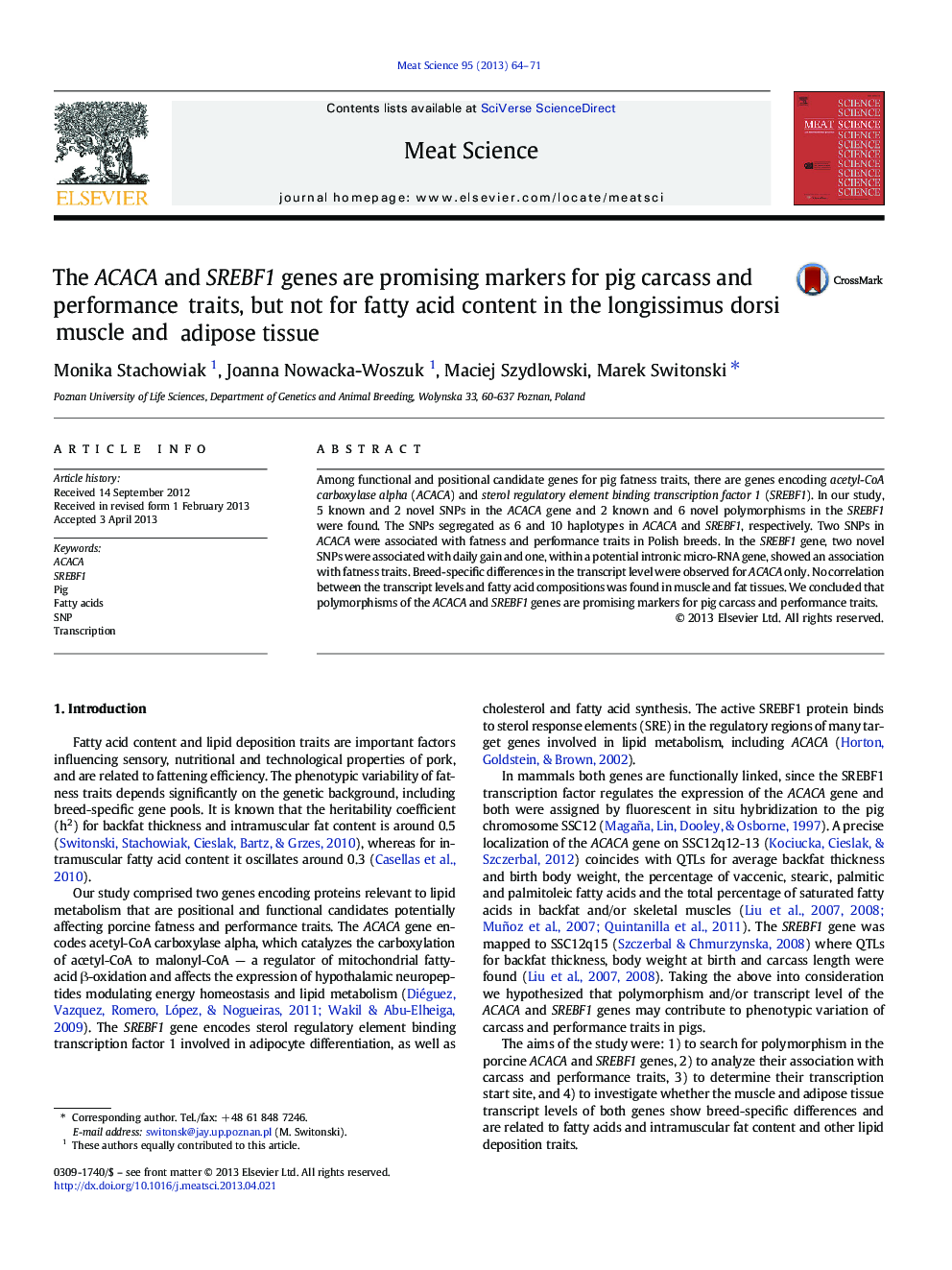| کد مقاله | کد نشریه | سال انتشار | مقاله انگلیسی | نسخه تمام متن |
|---|---|---|---|---|
| 5792312 | 1109635 | 2013 | 8 صفحه PDF | دانلود رایگان |

- The pig ACACA and SREBF1 genes are highly polymorphic.
- Polymorphisms of the ACACA show strong association with fat accumulation.
- Polymorphisms of the SREBF1 are associated with daily gain.
- Polish Landrace has different mRNA level of the ACACA and linolenic acid content.
Among functional and positional candidate genes for pig fatness traits, there are genes encoding acetyl-CoA carboxylase alpha (ACACA) and sterol regulatory element binding transcription factor 1 (SREBF1). In our study, 5 known and 2 novel SNPs in the ACACA gene and 2 known and 6 novel polymorphisms in the SREBF1 were found. The SNPs segregated as 6 and 10 haplotypes in ACACA and SREBF1, respectively. Two SNPs in ACACA were associated with fatness and performance traits in Polish breeds. In the SREBF1 gene, two novel SNPs were associated with daily gain and one, within a potential intronic micro-RNA gene, showed an association with fatness traits. Breed-specific differences in the transcript level were observed for ACACA only. No correlation between the transcript levels and fatty acid compositions was found in muscle and fat tissues. We concluded that polymorphisms of the ACACA and SREBF1 genes are promising markers for pig carcass and performance traits.
Journal: Meat Science - Volume 95, Issue 1, September 2013, Pages 64-71